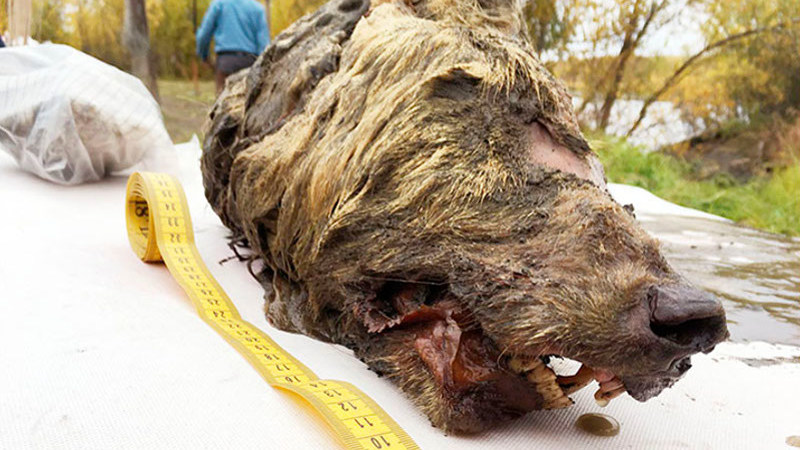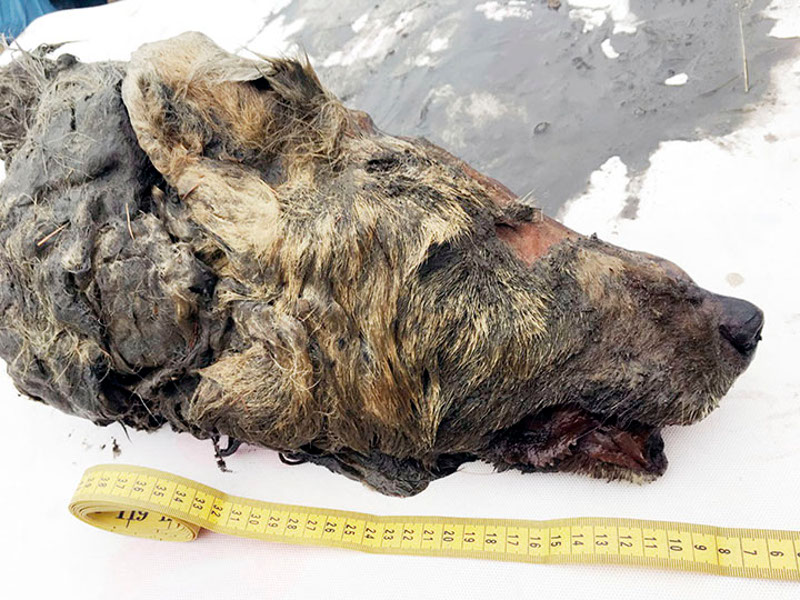Preserved Head of 30,000 Year Old Wolf Discovered in Siberia
A local resident living in Abyisky district in northern Yakutia, Siberia (you know the place), made a fascinating discovery last summer that was recently made public at the Miraikan National Museum of Emerging Science and Innovation in Tokyo, Japan during the grand opening of its mammoth exhibit. The resident discovered the impeccably well-preserved head of an ancient species of Pleistocene wolf. Completely covered in fur and everything.
This reminds me of the John Mulaney sketch where he describes what a crime scene probably looked like before DNA. The police officer comes up to the detective and says, “Detective, we’ve found a pool of the killer’s blood in the hallway.” And the detective says, “Hmm. Gross. Mop it up.” This is what would have happened if someone like me had come across the head of some animal. First, I wouldn’t have even gotten close enough to realize what it was, and I wouldn’t have known what it was even if I had. I just would have said, “gross.” And it is gross, but also really amazing, and will be so beneficial to the people who know how to properly assess it.
In a special report from Gizmodo, the following info was reported about the specifications of the hound:
The fully grown Pleistocene wolf was around two to four years old when it perished. Images of the wolf taken by Albert Protopopov, a researcher at the Republic of Sakha Academy of Sciences, show clumps of thick fur on its head, an immaculate snout, and a terrifying set of fangs. The head is enormous, measuring 15.7 inches (40 cm) in length. A modern wolf’s head measures only 9.1 to 11 inches (23 to 28 cm).
It goes on to explain what the study hopes to explore:
Meachen, a specialist in the evolution and geographical spread of ancient wolves, said the the preserved brain will be especially interesting to study. The soft tissues, she said, could provide new insights into these creatures, since those are not usually preserved in the fossil record. The researchers might even be able to do some interesting work with the tissue inside the nasal passages “in terms of what was for sensory (smelling) purposes and what was for thermoregulatory (heating and cooling) purposes,” said Meachen, who’s not involved with the research.
That’s pretty fascinating. It’s pretty amazing that there is still so much to learn about the earth’s history and its inhabitants. And sometimes we’re thrown a bone to help us along the way. See what I did there?
Check out the photos below:


